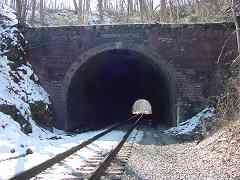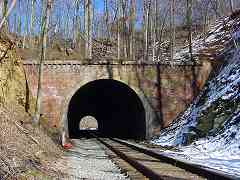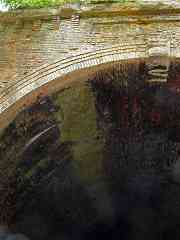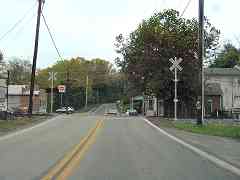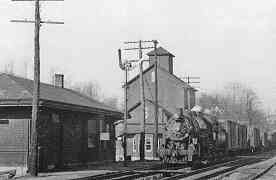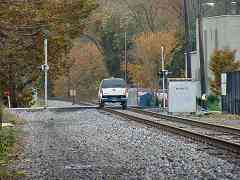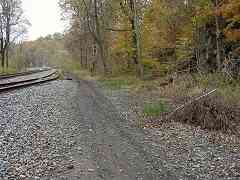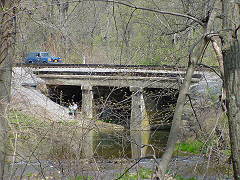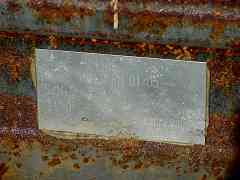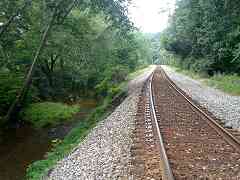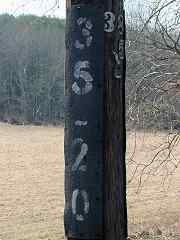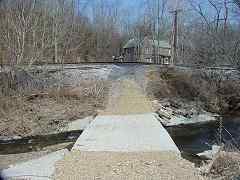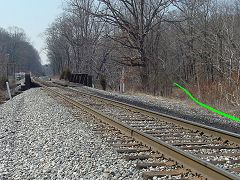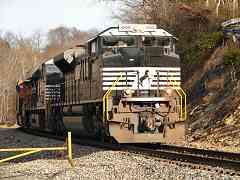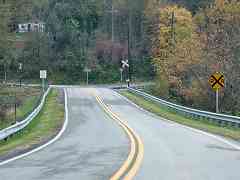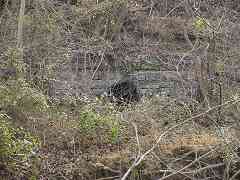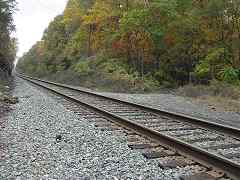|
Like the farmer, the railroad also crosses the Patapsco River back into Howard County,
but does so via a slightly more substantial bridge. Note modern mile
marker 36 at center, juxtaposed with a whitewashed old "mile-marker-on-a-rail"
on the left side of the tracks.
The tracks have been shouldered by the Patapsco ever since Relay, some
30 miles ago. But in reality the river is hardly more than a stream
here; its source is Parrs Spring, about 4 miles ahead, so the easy
river bank mileage is running out. Parrs Spring sits astride Parrs Ridge,
a serious vertical challenge for the fledgling B&O.
B&O's 1831 answer to the challenge was a series of inclined planes.
That route traversed slightly north of but roughly parallel to the present-day
trackage. In fact, in this photo, the gap in the trees on the right is
a vestige of that alignment (green line). Sections of that original remained
in use into the early 1900s until replaced by 10 new miles of track (and tunnel)
known as the Mt. Airy Cutoff.
The Mt. Airy Cutoff remains the active alignment today. The bridge in the
distance and track west date to about 1901. This tour continues
westward along the Cutoff, however, the original Mt. Airy Plane route is
also available as a virtual tour.
Change for: Mt. Airy Planes alignment tour at this site
| 